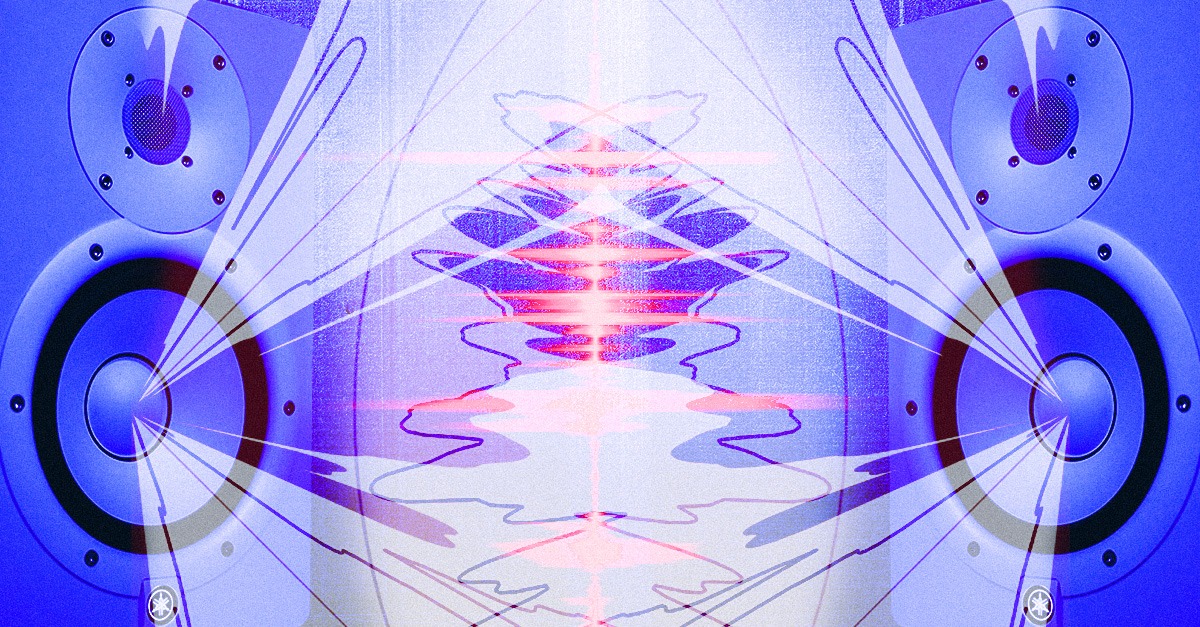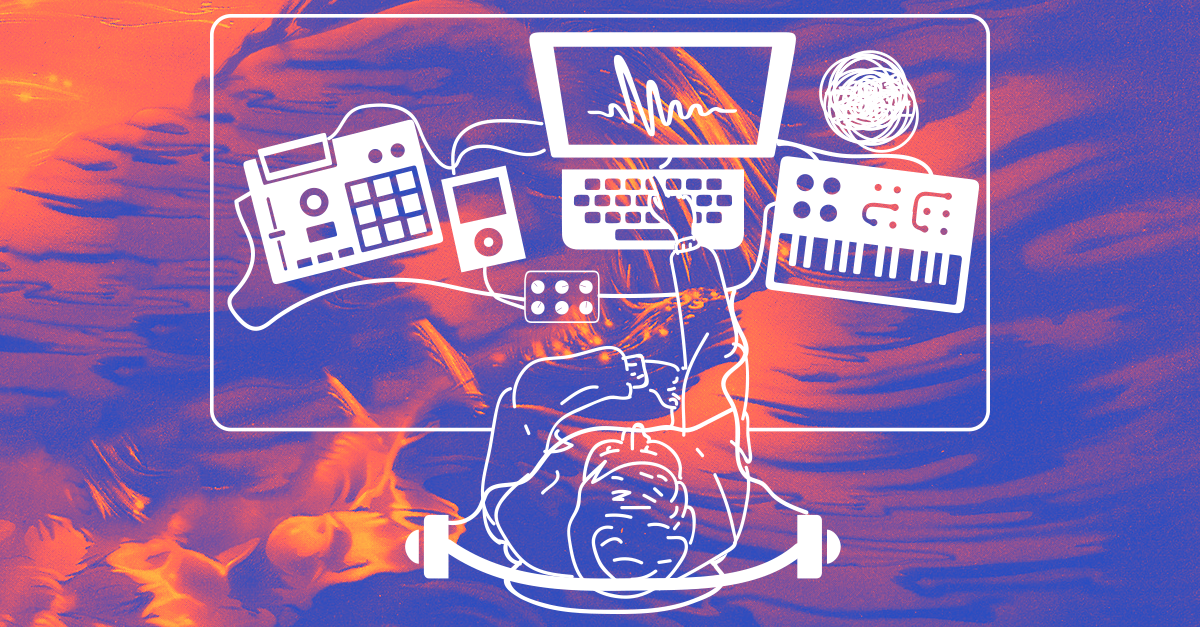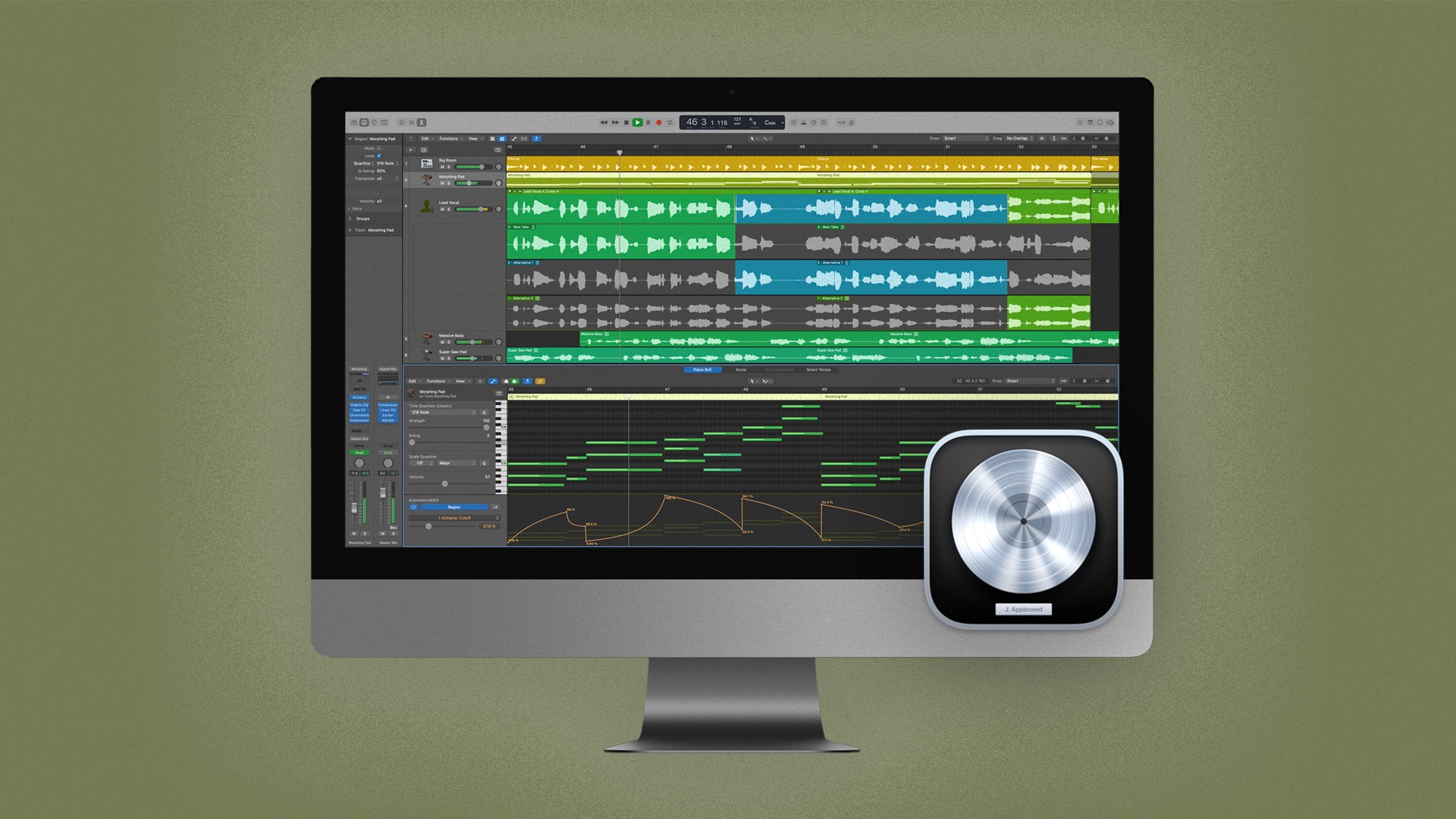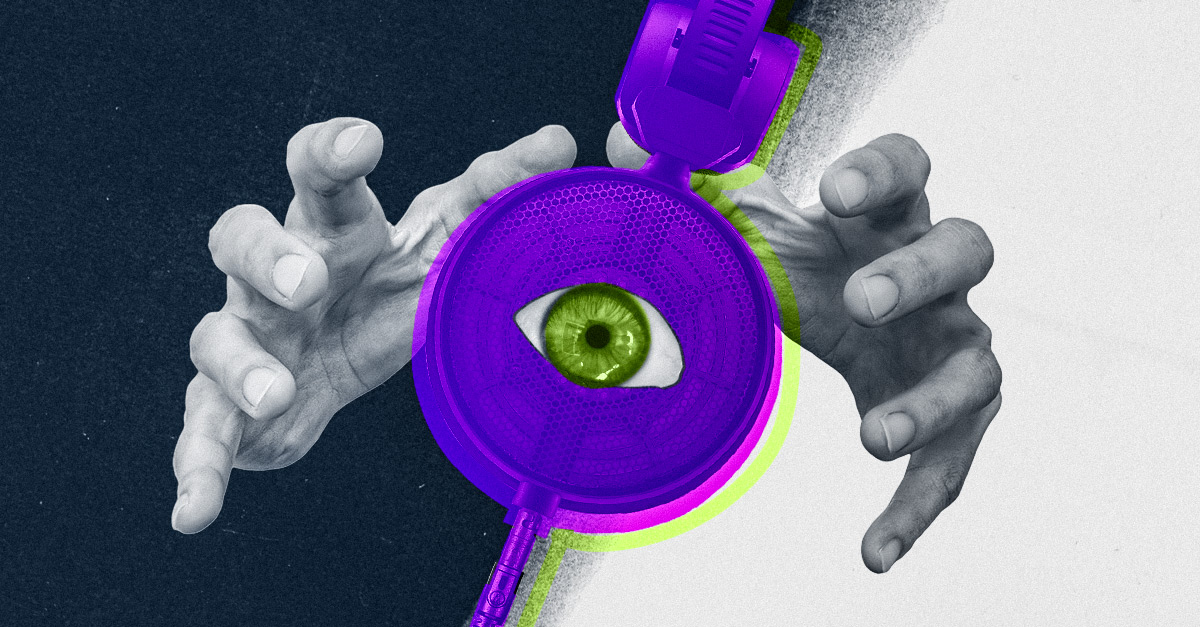
Immersive Audio: 3D Sound Explained for Creators and Listeners
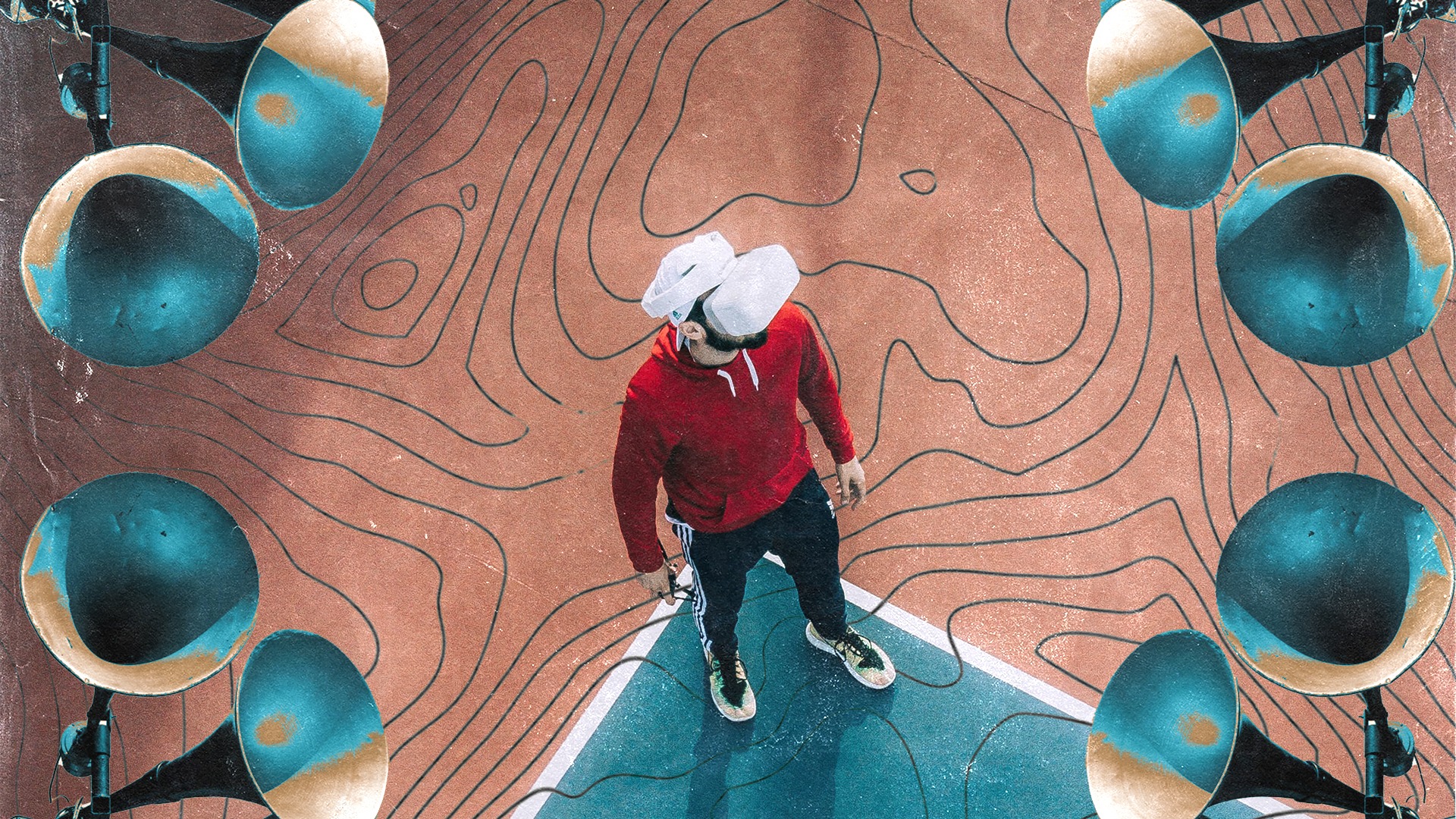
Choosing where your sounds will sit in the stereo field of your track is an essential part of mixing a song.
But what if you could place them anywhere around your listeners? Not just side-to-side, but behind, above and more?
That’s the idea behind immersive audio—a new way of experiencing recorded sound that promises to put you deeper into the music than ever before.
But what exactly is immersive audio? How does it work and how will it affect music production?
In this article I’ll break down everything we know about immersive audio, and what it means for the future of mixing music.
Let’s get started.
What is immersive audio?
Immersive audio is a listening experience that goes beyond the limited left-to-right span of traditional stereo.
It provides the sensation of three-dimensional sound where audio sources can be perceived all around the listener, including behind, above and elsewhere.
If that sounds complicated, just think of it as 3D audio that makes listening more engrossing, realistic and situated in physical space.
In some immersive audio experiences, head tracking technology provides dynamic feedback on the listener’s perspective. This can be used to sync the experience to their gaze and orientation for even deeper immersion.
Technically speaking, immersive audio is a form of multichannel mixing. That said, it includes a clever software component for positioning and decoding the location of sound objects. This sophisticated approach goes beyond simple multichannel audio in which a fixed number of channels are defined by a speaker configuration like 5.1 or 7.1.

The essential pre-mastering checklist.
Immersive technology has been around for a while in a few forms, but there’s a lot of interest right now. Thanks to Apple debuting the technology on its streaming platform and supporting it natively with Airpods Pro and MAX.
Why use immersive audio?
If you’re a music producer used to good old fashioned stereo, you might be wondering why immersive audio seems so important all of a sudden.
Confused about mono and stereo?
These posts will help you understand.

It’s true that plenty of big players are getting involved, but will it really have an impact on mixing music?
The answer is to broaden your perspective. Imagine how radical it must have been to make the shift from mono to stereo records in the early 60s.
Immersive experiences could open up the same kind of uncharted sonic territory for curious producers to explore.
There’s no telling how mixing could evolve as engineers discover new, exciting ways to build mixes in physical space.
The possibilities are exciting, but the actual experience of immersive audio is enough to change your mind.
Today’s media experiences are all about presence. While VR and AR tech focuses mainly on the visual aspect, audio is a big part of how your brain gets clues about your surroundings.
Immersive audio provides uniquely compelling spatialization that can feel more natural than other methods of creating presence.
Even regular stereo mixes that have been converted to immersive audio have an addicting quality to them that makes the mix feel like it has infinite space and z-axis.
What do you need for immersive audio?
Immersive audio isn’t as straightforward as simple stereo.
Whether you’re a creator looking to develop content in immersive audio or just an excited listener interested in the experience, you’ll need a way to access it to get started.
Here’s how it works.
Immersive audio for listeners
To listen to music in immersive audio, here’s what you’ll need:
- An app or audio source capable of playing immersive audio
- A pair of headphones or a speaker system that supports it
As I mentioned above, the Apple ecosystem has you covered with immersive audio between Music and the Airpods Pro and MAX.
That said, at this time, immersive still audio works on any pair of headphones. The trouble comes when you want to hear immersive audio on a speaker system. For that you’ll need a more comprehensive multi-speaker system—stick with headphones if you’re just getting started!
Hot tip: Many of Apple Music’s immersive audio releases are also available in high resolution lossless streaming. To experience streaming audio above 48 kHz sample rate, you’ll likely have to use an external DAC or audio interface.
Immersive audio for creators
Immersive audio is on the cutting edge of audio tech, so the tools and techniques involved in creating it are just beginning to arrive.
Luckily you don’t have to have access to a million dollar facility to create an immersive mix.
But depending on your DAW, you may need to download a few pieces of software to position objects in the immersive field and render the experience to stereo headphones. For example Dolby Atmos Renderer is required to create three dimensional mixes in Pro Tools.
Ableton has a suite of immersive mixing tools available via it’s M4L integration with Max.
🧠 Hot tip
Immersive audio standards
Immersive audio is a general term that can refer to a number of technologies developed for three dimensional listening.
They’re all designed to provide the experience of immersive sound, but there are a few differences to note.
Apple Spatial Audio
Apple Spatial Audio is Apple’s own 3D audio technology. You’ll get it for no extra cost with a regular Apple Music streaming subscription.
Apple Spatial Audio sounds great on a regular pair of headphones, but the integration with Airpods Pro and MAX adds another dimension.
Sensors in the earbuds transmit information about your position to make the experience even more immersive.
This integration requires Spatial Audio compatible Airpods and Dolby Atmos to function properly.
Dolby Atmos
Dolby Atmos is the biggest name in immersive audio.
Developed for the next generation of film and TV sound, Atmos uses up to 128 separate tracks to position audio information dynamically in a virtual space.
Atmos is available on an increasing number of media platforms including Netflix, Disney+, Apple TV+ and Amazon Prime Video.
However, the only music streaming service that currently supports it is Apple Music.
Immersive action
Immersive audio is an exciting new development in audio technology.
It’s not often that the very nature of listening gets disrupted, but it certainly opens up space for ambitious musicians to get involved.
Whether you’re curious about streaming tracks in immersive audio or looking to get into the fray as a creator, the info in this guide should be enough to get you started.
Gear guides, tips, tutorials, inspiration and more—delivered weekly.
Keep up with the LANDR Blog.



